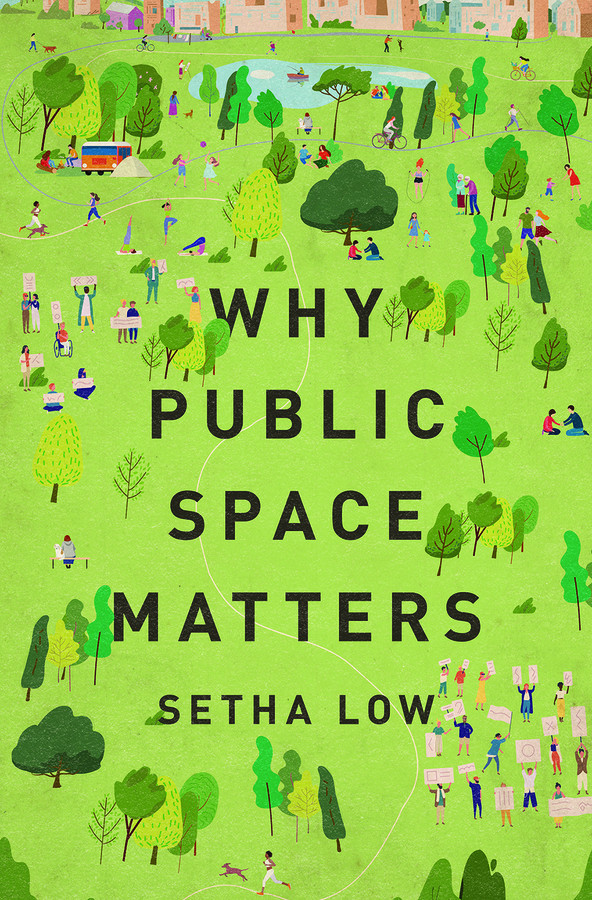Living in a culturally diverse, multi-ethnic society, there might well be a minority who would be anxious about leaving their private space and entering the public domain. This is incapsulated in Richard Sennett’s argument that public relationships are impossible as a result of narcissistic forms of intimacy and self-absorption. However, Setha Low offers a different perspective, arguing that if the state can realign urban priorities and construct public spaces more equally, residents and visitors will interact more actively with strangers in the public space.
Focusing on the social context of Covid-19 and the embedded racism in American society, Low investigates the significance of public space for individual flourishing and the community outcomes it promotes when combined with a socially just approach to issues of equity, equality and inclusion. The book is organized around the following domains and topics: (1) social justice and democratic practices; (2) health and well-being; (3) play and recreation; (4) the informal economy and social capital; (5) environmental and ecological sustainability; and (6) cultural identity and place attachment. Based on data from participant observation and in-depth interviews, the study identifies the geographical, material, historical, social and political aspects of public space and demonstrates the crucial role played by public space in building an equitable and just city.
What is public space? Although Low does not review the concept itself, she gives an answer based on her observations of the culture and urban design of public space in everyday life and how this has been transformed. She provides a novel angle for defining public space as a place where individuals and their family and friends may relax and be ‘at home’, but where at the same time newcomers can feel that they too belong as part of a diverse America that encourages social inclusion (p. 51). It is similarly novel to link the concept of public space with health and well-being—when using Habermas’ framework to discuss public space it is all too easy to forget this most fundamental aspect of the human condition: body and health.
The case studies selected by the author include the behaviour of visitors on Jones Beach, Long Island; children’s play and youth team-building in Lake Welch; the lives of informal workers in Latin America, Asia, Europe and North America; environmental sustainability; place attachment and cultural identity; and the impact of the Covid-19 pandemic on public space. By exploring vulnerable groups such as Black, Asian and Latino immigrants, informal workers and children through these case studies, the book illustrates the importance of evaluating public space through a social justice framework.
The vivid narratives and discourses presented in Why Public Space Matters open a window onto the lives of informal workers in the streets. Low’s study describes public space not only in terms of its sociality, cultural events and recreation, but also as a place for integrating informal workers and immigrants into the local economy. Constantly at risk of physical violence and theft as well as police surveillance and incarceration, these populations are extremely vulnerable, and the restrictions introduced during Covid-19 aggravated their plight. Hence, Low calls for the design and planning of public space to consider social justice in all its forms, whether distributional, procedural, interactional, informational or representational.
Looking to the future, Low postulates the construction of public spaces that improve residents’ and visitors’ experiences and mitigate the perceptions of danger and sense of insecurity. She suggests that creating public space that encourages contact between strangers increases people’s flexibility of thinking and results in a more vibrant and democratic public culture that recognizes difference and enhances people’s sense of place, belonging and inclusion (p. 5). We should also consider the most important use and function of public space: providing for the socialization of children and improving physical and mental well-being by encouraging walking and sports as well as exposure to natural landscapes.
This study of public space in different forms—including beaches, walkways, sidewalks, markets, gardens and parks—will attract a variety of readers, from architects and politicians to scholars and the general public. Written during the time of Covid-19, Low looks back at society when the pandemic first began in the winter of 2019. She shows us the ways in which Covid-19 transformed the relationship between people and urban space in New York, Brooklyn and the suburbs of Long Island, as public spaces such as parks and sidewalks became the locus of additional hospital tents and vaccination sites. She argues that virtual public space can be used to complement the absence of face-to-face interactions and to strengthen distant social ties. However, not everyone has access to technology and digital equipment. We therefore need to understand the ramifications of using virtual public space from the aspect of social justice and realize it is not a substitute for the physical form.
Why Public Space Matters reflects the developmental dilemma of public space in the United States, which is where urban sociology originates. It is a call for educating the public about public space and discussing the attendant policy issues. However, it should also be noted that the author only focuses on public space in the open air, such as plazas, parks, beaches and markets. What about museums, galleries, libraries and bookstores? These public spaces are still waiting to be explored.
Linjie Zhang, University of Edinburgh
Setha M. Low 2023: Why Public Space Matters. New York, NY: Oxford University Press. Cover used with permission of Oxford University Press.
Views expressed in this section are independent and do not represent the opinion of the editors.

